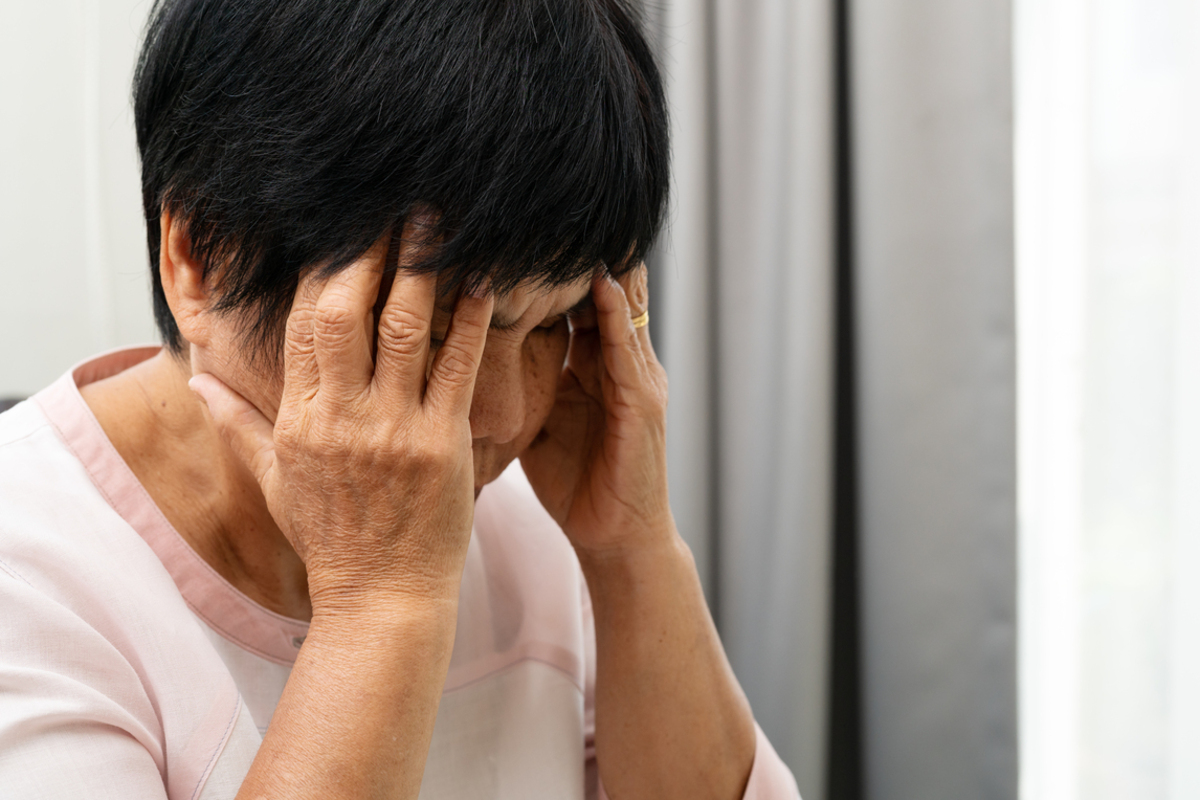Sundowning is a phenomenon seen in Alzheimer's disease as well as other forms of dementia, where a patient becomes more confused and agitated in the late afternoon — typically around the time the sun sets. Although you may not see this type of behavior in the earlier stages of Alzheimer's, it is common in patients with moderate forms of Alzheimer's disease. Roughly 30 to 40 percent of patients with Alzheimer's will eventually have sundowning symptoms.
Here, we will explore the possible cause of these symptoms and what you could do manage them.

What is sundowning?
What sets sundowning apart from other forms of dementia is the fact that these symptoms only seem to worsen as daylight fades. Patients who have this type of condition will often suffer from increased general confusion, agitation, and mood swings.
The circadian rhythm is responsible for your sleep-wake cycle. As the daylight fades, it causes dopamine levels in your brain to naturally drop and melatonin to be produced to make you more and more tired. As night turns into dawn, it also is responsible for the gradual rise in cortisol levels that cause you to wake up from your sleep.
In ideal circumstances, your circadian rhythm will be stable for a prolonged period of time and even if you find yourself staying up occasionally for a chance to socialize on the weekend, your cycle will not be affected substantially only after a few missed hours of sleep and your chemical levels will still ebb and flow normally. If you turn yourself into a "night owl" however, and go to bed well after midnight, you will find that your sleep cycle is completely off and you will likely not have a restful sleep as a result.
When your brain starts to deteriorate from a condition like Alzheimer's disease, this delicate cycle begins to fail.
Dopamine levels will fluctuate at more severe peaks and valleys and the production of melatonin will be drastically impacted. If your body is unable to produce enough melatonin, it will never receive the natural cue to start to wind your day down and prepare for sleep — so these patients will be much more active during this period of the day. Because their dopamine levels will also be affected, neurological problems like tremors or bizarre behavior will also more strongly manifest during this period of time.
Another theory that helps explain this phenomenon is seen in the autopsies of patients who had suffered from Alzheimer's disease. After death, researchers have found that a part of the brain that is directly responsible for your perception of light and dark cues is significantly smaller compared to the same structure in elderly patients without the disease. This part of the brain is called the suprachiasmatic nucleus.
The atrophy that occurs at this location can also help explain why sundowning is not as prevalent in the earlier stages of Alzheimer's, but when a patient accumulates damage to the brain, the nucleus will no longer be able to perceive the difference between day and night and chemicals will become completely unbalanced.
What are the possible treatments for sundowning?
When it comes to treating this condition, you may think that a quick and easy solution would be to just take some melatonin supplements, and the patients will be able to revert back to their normal sleeping pattern.
Earlier studies have shown that there is some benefit to patients taking melatonin. Their symptoms will improve, but as the circadian rhythm begins to falter more and more significantly as the brain is dying off, melatonin will be inadequate because there is no location for it to bind in the brain to have an effect.
More recent investigations have shown that even earlier impacts of melatonin may also be exaggerated due to small sample sizes in the studies. Even if it is not a guaranteed success, it is still worthwhile to try melatonin to relieve some of the symptoms of sundowning.
Another thing that you can do if you are attempting to limit the impact of sundowning would be to focus on behavioral therapy and create more rigid schedules to help balance out chemical levels in the brain. One of the first things that a person can do to try to limit sundowning episodes would be more active during the day. Making sure a patient with Alzheimer's is active throughout the day cannot only stimulate the brain to help preserve functions, but it can also tire out the person so they will be more exhausted at the end of the day — leading to improved sleep.
Another idea that you may try to decrease the frequency of sundowning episodes would be to regulate the napping time of a person experiencing these symptoms. When a person naps too long, it will be harder for them to fall asleep later at night and their circadian rhythm will be completely altered. Numerous investigations have shown that patients that nap for longer than an hour per day have worse symptoms of sundowning compared to patients who follow a more structured nap schedule.
The last recommendation that I can make to help control sundowning in a patient suffering from Alzheimer's would be to address sleep hygiene. It is important that the patient has a strict schedule where they awake at the same time every day and go to bed at the same time each day as well. This can improve sleeping habits and reduce stress or anxiety in a patient that experiences this symptom regularly.
It may be worthwhile for the family of a person suffering from Alzheimer's to discuss the physical environment of the room they sleep in, as well. Allow the patient to adjust the lighting, the temperature, and the noise levels to their liking so they will be as comfortable as possible in this environment.
- Photo courtesy of SteadyHealth
- https://www.ncbi.nlm.nih.gov/pmc/articles/PMC5187352/: https://www.ncbi.nlm.nih.gov/pmc/articles/PMC3246134/
- www.ncbi.nlm.nih.gov/pubmed/9111704


Your thoughts on this